| AIRBUS COMPLETES THE FIRST HORIZONTAL STABILISER FOR THE A350F FREIGHTER IN SPAIN

Airbus has completed manufacturing the first horizontal stabiliser (HTP) for the A350F freighter at its plants in Spain. This milestone demonstrates Spain’s key role in the production of commercial aircraft, including the A350F programme.
The production of the A350F’s first horizontal stabiliser (HTP) involved the Airbus plant in Cádiz, where parts of the HTP were manufactured, and Getafe, for assembly and outfitting.
This HTP will be shipped to the Airbus Final Assembly Line (FAL) in Toulouse in the coming weeks to be joined with the fuselage of the first test aircraft. Airbus is manufacturing two A350F aircraft for flight testing in 2026 and 2027.
The A350F HTP can be manufactured in the same production line as the passenger version, delivering operational and industrial advantages and improvements.
Ricardo Rojas, President of Airbus’ Commercial Aircraft business in Spain, said: “The A350F will offer a clean-sheet, specifically designed solution for air freight transport, bringing more efficiency and versatility to the cargo market. With more than 1,400 orders for the A350, including 66 A350Fs, Spain plays a key role in this programme that presents the future in air cargo transportion.”
All in all, the horizontal stabiliser, rear fuselage (section 19) and lower wing covers for both the A350 and A350F are manufactured in Spain. In addition, the A350F’s main deck cargo door, the largest in the industry, will also be manufactured in Spain. Made from composite materials, it has a 4.3-metre opening, making loading and unloading easier, faster and safer.
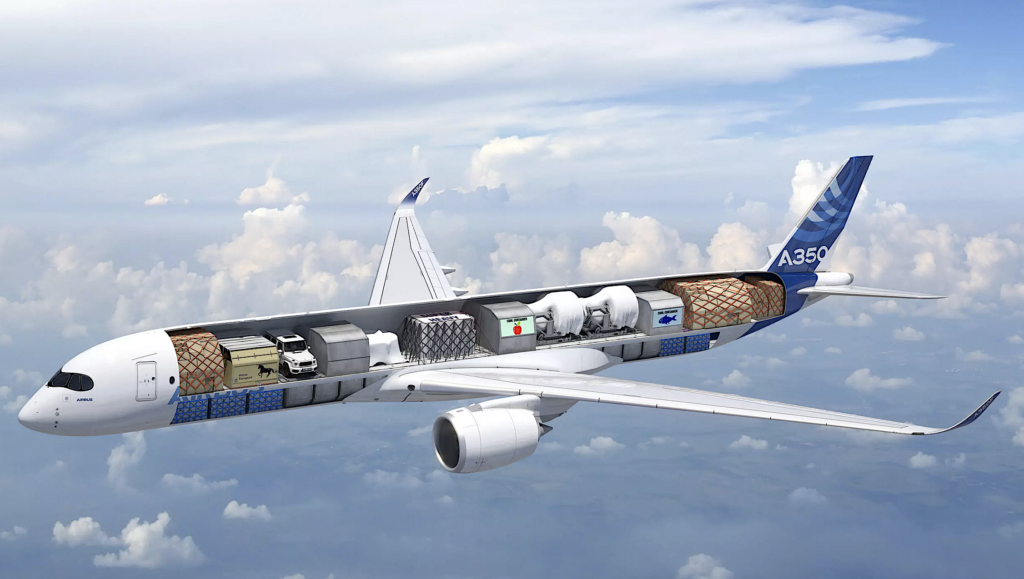
Designed to be the world’s most advanced cargo aircraft, the A350F meets the evolving demands of the global air freight market. In terms of efficiency, it will offer at least a 20% reduction in fuel consumption and CO2 emissions compared to cargo aircraft currently in service. Thanks to a range capability of up to 8,700 kilometres with a payload of up to 111 tonnes, it will allow operators to deploy it on international long-haul routes.
| EUROPE’S FIRST STEP TOWARDS MONITORING HUMAN-CAUSED EMISSIONS

MicroCarb is a polar-orbiting satellite developed by CNES that will fly at around 650 km above Earth. Equipped with an infrared spectrometer, MicroCarb will analyse sunlight reflected from the Earth to measure oxygen and carbon dioxide concentrations at four specific wavelengths, allowing measurements with a precision of up to one part per million. © CNES/ill./SATTLER Oliver
Distinguishing between natural CO₂ absorption and human-caused emissions is crucial for understanding the carbon cycle, accurately attributing climate change, and developing effective climate policies.
Natural processes like forests and oceans absorb CO₂ as part of a balanced system, while human activities add excess CO₂, disrupting that balance. Separating these sources helps scientists’ model future climate scenarios, track the effectiveness of emission reduction efforts, and ensure accountability in meeting climate goals.
The CNES-led MicroCarb mission is Europe’s first satellite dedicated to mapping global carbon dioxide (CO₂) sources and sinks. Using a high-precision spectrometer, MicroCarb will help distinguish between natural absorption of CO₂ and emissions from human activities—crucial for climate science and policy.
The MicroCarb satellite is based on CNES’s Myriade platform. Its instrument was developed by Airbus Defence and Space, and integration was carried out by Thales Alenia Space UK with support from the UK Space Agency.
MicroCarb contributing to Copernicus
Although independent from the Copernicus upcoming CO2M mission—MicroCarb will play a vital role as Copernicus Contributing Mission by providing early observations to the Copernicus Atmosphere Monitoring Service, in particular the greenhouse gas monitoring products.
The expertise developed during MicroCarb’s commissioning and operational phases will directly contribute to the preparation of the Copernicus CO2M satellites, helping to optimise their launch and operations.
Together, MicroCarb and Copernicus CO2M will form part of an expanding international satellite network focused on monitoring greenhouse gases, enabling scientists to better understand their sources, sinks, and atmospheric movement.
Backed by the European Commission’s Horizon 2020 programme, the MicroCarb mission received critical support through the In-Orbit Demonstration/Validation (IOD/IOV) initiative—an essential stepping stone for Europe’s space research and innovation community. Through the European Space Agency, the Commission funded the integration of a key data processing unit, a key element of MicrCarb ground segment, and secured launch services via Arianespace and the Vega-C rocket.
| AUTONOMOUS DRONES TAKE FLIGHT AT NATO-BACKED COMPETITION
Four teams of seven researchers and professors from universities in the Netherlands, United Kingdom, United States and Austria challenged each other at the Huntsville UAS (Unmanned Aircraft System) and C-UAS (Counter UAS) test range in Alabama, as part of a competition supported by the NATO Science for Peace and Security (SPS) Programme.
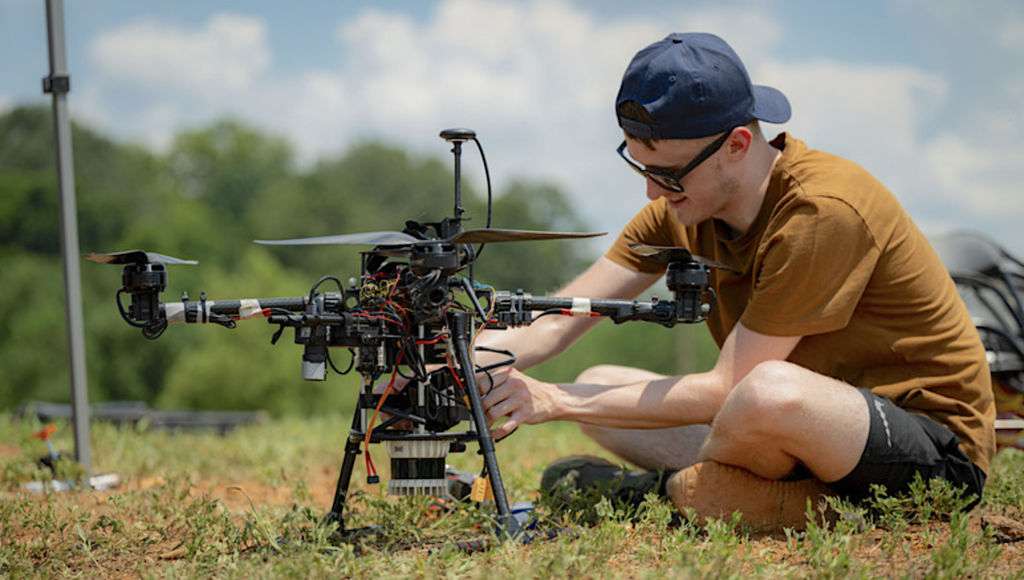
The event, hosted by the University of Alabama in Huntsville (UAH), was the second of three competitions organised through the SPS-supported “SAPIENCE” initiative, which aims to demonstrate how autonomous drones that cooperate with each other may be used in crisis management scenarios.
Expanding in scope from the first competition, which took place on 29 and 30 August 2024 in an indoor arena in London, United Kingdom, the Huntsville event required participating teams to develop autonomous drones suitable for outdoor conditions and for a scenario grounded in local conditions: the aftermath of severe storms that generated several tornadoes, which are an annual occurrence in the southeastern United States.
A flight test range simulated just such a disaster scenario, and the four university teams were assigned tasks such as damage assessments of residential communities, search and rescue for victims, and the delivery of lifesaving medical supplies. They were encouraged to perform these tasks using multiple fully autonomous drones simultaneously, thus demonstrating innovative approaches to the technical challenges of autonomous multi-platform systems.
The third and final SAPIENCE competition will take place in 2026 in the Netherlands, where the four university teams will build on the lessons learned in London and Huntsville to complete tasks in a scenario combining indoor and outdoor conditions.
| ECB LAUNCHES DESIGN CONTEST FOR FUTURE EURO BANKNOTES

The European Central Bank (ECB) today launched a public contest for the design of future euro banknotes – the next step in the euro banknote redesign process. The ECB’s Governing Council has already selected two possible themes for the future euro banknotes after consulting experts and the public. These are: “European culture”, focusing on shared cultural spaces and important Europeans; and “Rivers and birds”, focusing on the resilience and diversity of Europe’s natural ecosystems. In January the Governing Council also selected motifs to illustrate the two possible themes.
The design contest, which is open to graphic designers residing in the European Union, aims to identify the best design proposals for the future euro banknotes. The contest will proceed in two phases: an application phase and a design proposal phase. During the application phase, designers must meet the specific requirements listed in the contest notice. The applicants will be assessed on the basis of their qualifications and achievements.
Selected designers will be invited to participate in the second phase and submit their design proposals. A group of independent experts – the Design Contest Jury – will evaluate the proposals and select up to five per theme.
“The euro is more than a currency – it symbolises European unity and diversity. Through this contest, we invite designers across Europe to shape the future of our banknotes to reflect our shared cultural identity and natural heritage,” said ECB President Christine Lagarde.
After the contest finishes, the public will be invited to provide feedback on the designs selected. The Governing Council is expected to decide on the final design by the end of 2026. The new banknotes will be ready to enter circulation some years after this decision and following the production process. For detailed information about the contest, please refer to the ECB’s website and the Official Journal of the European Union. Designers interested in participating are invited to submit their application by 12:00 CET on 18 August. https://ted.europa.eu/en/notice/-/detail/461742-2025
| NORDIC CAPITALS RANK AS CLEANEST IN UPDATED EUROPEAN CITY AIR QUALITY VIEWER
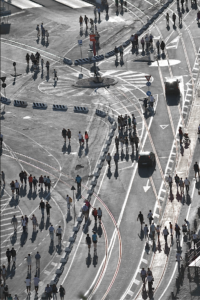
What is the level of air pollution in your city? Stockholm, Reykjavik and Helsinki rank as the cleanest European capital cities in terms of air quality in the updated European Environment Agency’s (EEA) European city air quality viewer.
City air quality viewer
Users can check out how well their city is doing in the online European city air quality viewer, which has an updated methodology on how the rankings are calculated. Cities are ranked from the cleanest city to the most polluted, based on the risk of mortality associated with long-term exposure to fine particulate matter, (or PM2.5), nitrogen dioxide (NO2) and ozone (O3) over the past two calendar years.
This tool is focused on long-term air quality, as long-term exposure to air pollution causes the most serious health effects. The viewer is updated once a year. A new feature also allows easier comparison between the capital cities of each country.
European Air Quality Index
The EEA has also updated the European Air Quality Index. Users of the web-based index can now access more real-time information on air pollution levels with broader coverage as of today.
The updated service gives Europeans an even more accurate picture of the air quality around them, based on hourly data updates on concentrations of key air pollutants from more than 3,500 monitoring stations across Europe.
Hourly data is now used for all key pollutants to estimate the index, including particulate matter pollutants (PM2.5 and PM10), which were presented until now as 24-hour averages. The index presents the potential impact of short-term exposure to air pollution on health, with the index bands now updated to take into account the 2021 World Health Organization’s air quality guidelines.
The index is determined using a combination of up-to-date data reported by EEA member countries and forecasts of the air quality level as provided by the EU’s Copernicus Atmospheric Monitoring Service (CAMS). It also includes modelled data where information can be found for every single 1×1 km grid in Europe, in addition to the points where the monitoring stations are located.
Background
The European city air quality viewer has been published since 2019. Until now, cities were ranked only based on average concentration levels of fine particulate matter from urban or suburban background or traffic air quality monitoring stations. This limited the number of cities included to around 372, given the dependency on the stations. Furthermore, only fine particulate matter was used, excluding two other key pollutants and thereby preventing a more comprehensive comparison of air quality in cities, as is now delivered in the updated version.
The European Air Quality Index was launched in 2017 and helps users to understand more about local air pollution and its impact on their health. The Index is operated by the EEA and based on reported data provided by member countries, cooperating countries and other voluntary reporting countries. Forecast air quality levels are provided by the Copernicus Atmospheric Monitoring Service.
| FRONTEX HELPS 1.200 VICTIMS IN GLOBAL CRACKDOWN ON HUMAN TRAFFICKING

In a sweeping international crackdown, Frontex helped identify nearly 1 200 victims of human trafficking during Operation Global Chain 2025. This week-long effort brought together nearly 15 000 officers from 43 countries in a coordinated strike against one of the world’s most exploitative crimes.
Behind the numbers are real human stories of women, children, and men from 64 countries, forced into sexual exploitation, criminal activity, and begging. Some were trafficked across multiple countries, separated from their families and stripped of their freedom.
This global effort, coordinated from Frontex headquarters in Warsaw, focused on cases of sexual exploitation, forced criminality and forced begging. Frontex supported its partners by deploying border officers, enabling real-time information exchange, and helping detect signs of trafficking, particularly at Europe’s external borders.
“Human trafficking destroys lives and crosses every border. That’s why we need to respond as one,” said Hans Leijtens, Executive Director at Frontex. “By working together, we not only disrupt criminal networks but also help bring protection and hope to people who have been through the worst.”
The operation led to 158 arrests and the identification of a further 205 suspects. Authorities launched 182 new investigations, including 15 cross-border cases. Many of these cases have already led to rescues and critical breakthroughs in ongoing investigations.
Operation Global Chain 2025 was conducted under the framework of EMPACT, with funding from Frontex, INTERPOL’s I-FORCE Project, and the German Federal Foreign Office. INTERPOL supported the operation by providing access to its databases and deploying criminal intelligence officers to Warsaw.
Key examples from the operation
- In Italy, police uncovered 75 suspected victims during raids on massage parlours, along with weapons and drugs.
- In Romania, eight children trafficked for forced begging were rescued. Nine suspects were arrested.
- In Thailand, police dismantled a prostitution ring that targeted minors through social media.
- In Portugal, Frontex-supported border officers spotted indicators of labour trafficking involving Paraguay nationals.
- In Ukraine, an operation was exposed that recruited women for exploitation in Germany.
The success of the operation shows the power of international cooperation in tackling human trafficking and protecting those at risk. Frontex remains committed to protecting the most vulnerable at Europe’s borders and defending fundamental human dignity against those who seek to exploit it.
Participating countries
Albania, Austria, Belgium, Bosnia and Herzegovina, Brazil, Bulgaria, Colombia, Croatia, Cyprus, Czech Republic, Denmark, Estonia, Finland, France, Germany, Greece, Hungary, Iceland, Ireland, Italy, Kosovo*, Latvia, Lithuania, Luxembourg, Malta, Moldova, Montenegro, Netherlands, Nigeria, North Macedonia, Poland, Portugal, Romania, Serbia, Slovakia, Slovenia, Spain, Sweden, Switzerland, Thailand, Ukraine, United Kingdom, Vietnam
Participating agencies and projects
Europol, INTERPOL, Frontex, EU4FAST, AMERIPOL
| INNOVATION FUND: SIX ADDITIONAL PROJECTS SUPPORTING THE DECARBONISATION OF EUROPEAN INDUSTRY
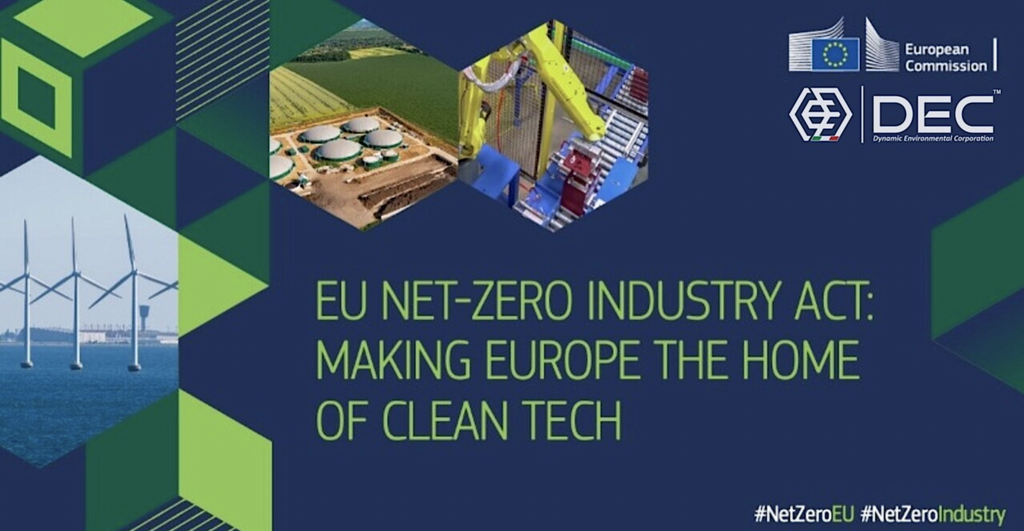
Six projects from the Innovation Fund 2023 general call for Net-Zero Technologies (IF23 Call) reserve list have signed their Grant Agreements. This brings the total number of projects supported under this call to 83, notably including the first Innovation Fund project located in Luxembourg. Together, these six new projects will benefit from a total of nearly €319 million in grants financed via the EU Emissions Trading System.
These six projects aim to reduce 24.1 million tonnes of CO2 equivalent over the first ten years of operation. They will deploy innovative decarbonisation technologies in the hydrogen, hydro/ocean energy, energy storage (other) and refineries and chemicals sectors. In line with the Net-Zero Industry Act and the Clean Industrial Deal, these projects will contribute towards Europe’s transition to a net-zero economy and strengthen the EU’s competitiveness and clean technological leadership. Discover all the projects that have signed their Grant Agreements under the IF23Call.
The following six projects have signed their Grant Agreements:
ARCaDe – Antwerp Refinery Carbon capture and DeNOx, located in Belgium (Total Energies)
ECHO-WAVE – Energy Community for Hydrogen On-site Production from Wind and AgriVoltaics for Industry DEcarbonisation, located in Luxembourg (Green Power Storage Solutions)
GRHENA – Green heat generation hub at the Chemical Industrial Park of Tarragona, located in Spain (Iberdrola Clientes Sociedad Anonima)
H2M Eemshaven – Kick starting the EU hydrogen value chain by realizing a 1,000 MW low-carbon hydrogen production plant, located in The Netherlands (Equinor).
LARS – First European large-scale integrated pre-treatment and chemical recycling plant for mixed plastic waste to generate pyrolysis oil as an alternative raw material for fossil-based raw materials, located in Germany (Green Dot Advanced Recycling).
VianaWave – Accelerating the transition to net zero with large-scale generation of clean electricity from ocean waves, located in Portugal and Sweden (CorPower Ocean).
Currently, CINEA is evaluating the project proposals received under the Innovation Fund 2024 general call for Net-Zero Technologies (IF24Call).
The Commission is also looking ahead to the upcoming Innovation Fund 2025 general call for Net-Zero Technologies (IF25Call), which is planned to launch at the end of 2025.
| LITHIUM BATTERIES IN AVIATION: POWERING THE FUTURE, AND MANAGING THE RISKS
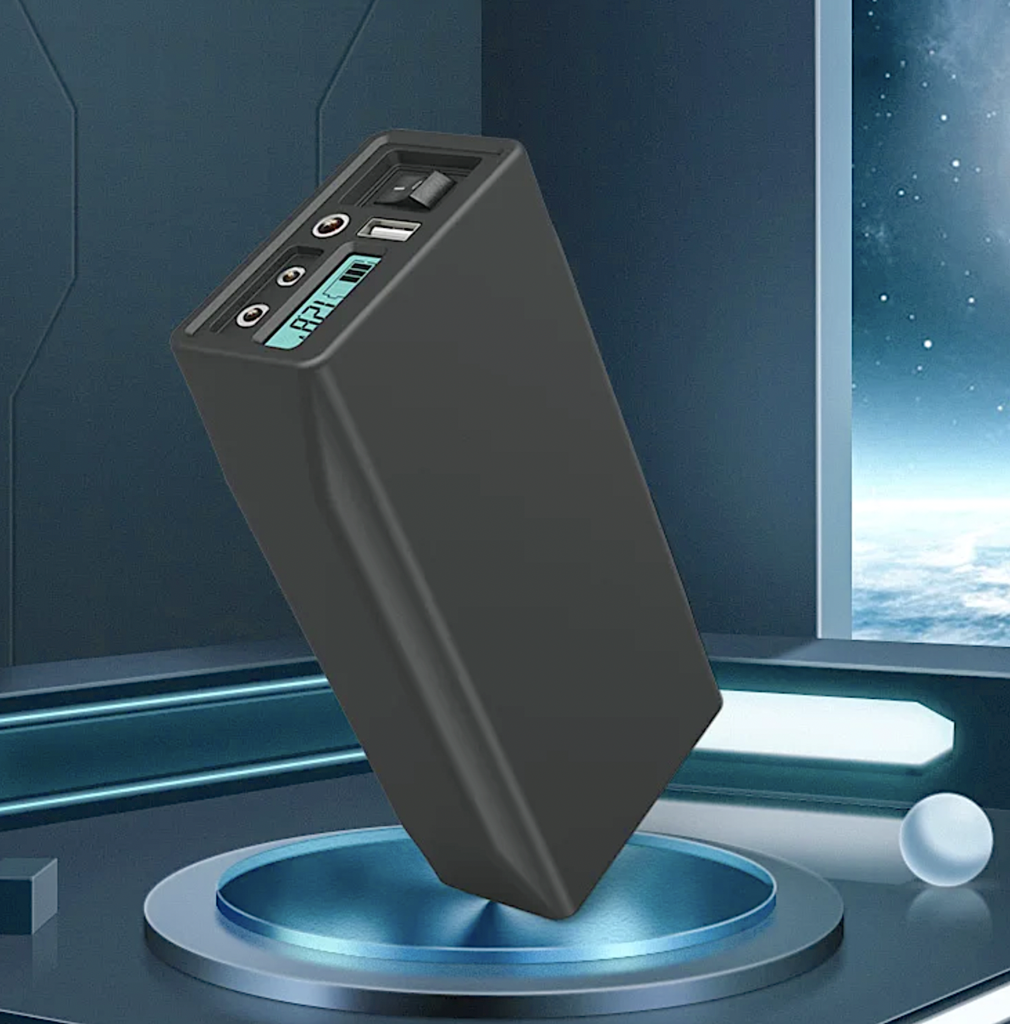
It’s hard to imagine a world without lithium batteries. They power everything – from our smartphones and laptops to electric cars – and store renewable energy. Being used in a wide range of devices and applications, lithium batteries have made modern life more convenient, but they also come with risks – especially when taken onboard an aircraft. Every year, airlines report incidents involving overheating, or even fires, caused by lithium batteries. This is precisely why strict rules exist for carrying these powerful, yet somewhat unpredictable, energy sources.
Why are lithium batteries a risk?
The same technology that makes lithium batteries so efficient also makes them volatile. If damaged, overcharged, or exposed to extreme heat, they can go into “thermal runaway” – a chain reaction where the battery overheats, releases gas, and potentially catches fire – causing safety hazards. Such reactions have already occurred during flights, sometimes due to damaged phone batteries, improperly packed power banks, or even spare batteries being stored in checked luggage.
As a passenger, you need to be aware of how to handle these batteries when flying.
The do’s and don’ts of flying with lithium batteries according to EASA’s Safety Information Bulletin
– DO carry spare batteries (including power banks) in your hand luggage instead of your checked luggage.
– DO carry e-cigarettes and power banks where they can be monitored.
– DO ensure your device’s batteries are below 100Wh (examples of compliant devices are normal cell phones, laptops, and tablets)
– DO check with the operator if you plan to carry devices where you are not sure about their energy level (e.g. tools, power banks, drones), and request appropriate approvals (between 100 and 160Wh).
– DO NOT charge your electronic devices using anything other than the aircraft power supply at your seat (Do NOT use power banks to charge your devices onboard the aircraft).
– DO NOT ignore airline-specific rules – some have specific restrictions as per the maximum number of devices allowed and their watt–hour rating.
The growing role of lithium batteries in aviation
Although the hazards that lithium batteries carry can be significant for airline safety, they also have many uses in the airline industry itself. Pilots use lithium battery-powered tablets for flight planning and aircrafts rely on lithium backup systems. With the rise of e VTOLS and battery-powered planes, the ability to properly manage lithium batteries goes beyond the safety of the passengers and leans into the future of sustainable flying.
As lithium batteries are becoming increasingly essential not only in our everyday lives but also in the next generation of aviation, it’s now more important than ever to handle them with caution and responsibility. So next time you fly take a moment to check how your batteries are packed and whether you comply with your airline’s rules: a little caution can go a long way to keeping air travel safe.
| NEW ECDC WEEKLY REPORTS AND GUIDANCE TO TACKLE MOSQUITO-BORNE DISEASES ACROSS EUROPE
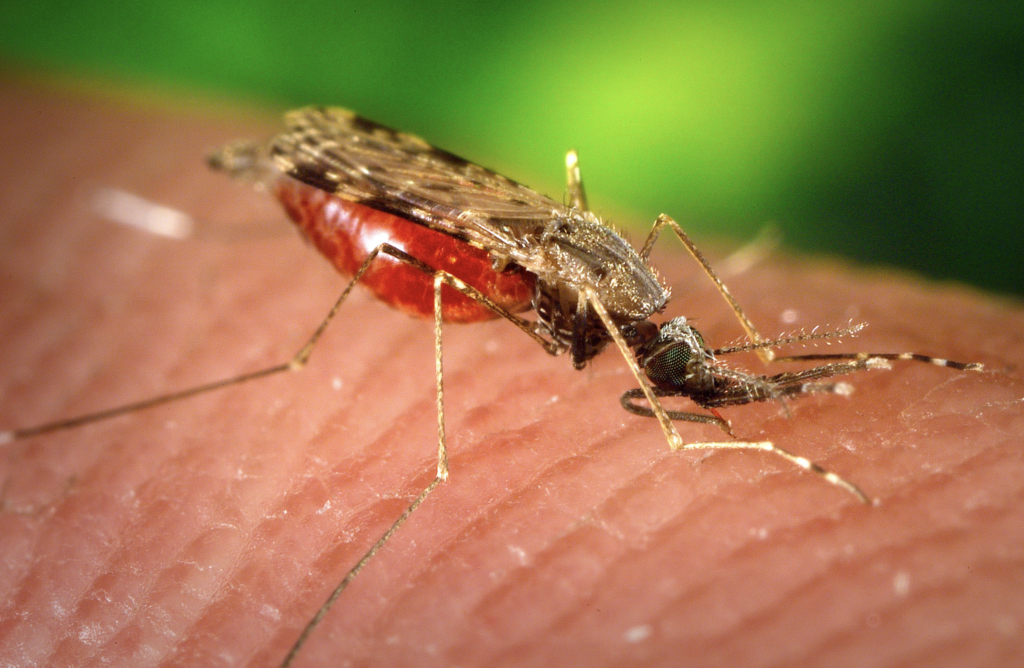
As Europe enters this year’s mosquito season, the European Centre for Disease Prevention and Control (ECDC) has launched a new series of weekly surveillance updates to help public health authorities monitor mosquito-borne diseases in a timely way. The reports cover chikungunya, dengue, Zika, and West Nile viruses, providing a
comprehensive view of the evolving situation across European countries.
ECDC’s new surveillance updates aim to enhance timely public health response and strengthen coordination among countries. By offering consistent, near real-time epidemiological data, the updates can inform both national and regional control strategies, especially as Europe faces longer and more intense mosquito seasons due to climate change.
In order to support national and regional preparedness efforts even further, ECDC is also publishing new public health guidance on locally acquired Aedes-borne diseases in Europe. The document outlines practical surveillance, prevention, and control measures for chikungunya virus disease, dengue, and Zika virus disease, with recommendations tailored to four risk levels based on vector presence, environmental conditions, and recent transmission. A similar guidance for West Nile virus is also available.
The guidance also includes criteria for risk classification, actions for each level, and strategies for vector management, outbreak response, and public awareness. It is designed for public health authorities, laboratories, and emergency planners to help them assess risks, prioritise resources, and strengthen integrated vector control.
Current situation
The main vectors of concern for Europe include Aedes albopictus, which can transmit dengue, chikungunya, and Zika viruses; Aedes aegypti, which also spreads yellow fever virus; and Culex pipiens, the primary vector for West Nile virus. These species are expanding across Europe. Aedes albopictus is currently established in 16 countries and 369 regions – up from 114 regions about a decade ago. Aedes aegypti, once eliminated from Europe, has re-emerged in Cyprus. Meanwhile, Culex pipiens continues to enable widespread West Nile virus transmission, especially during the summer and early autumn.
Last year, 304 cases of locally acquired dengue were reported in Europe, an increasing trend compared with previous years (130 cases in 2023 and 71 cases in 2022). In the same year, 1 436 cases of West Nile virus infection were recorded, with infections spanning 212 regions in 19 countries. These figures underline the growing geographic spread and public health impact of mosquito-borne diseases in Europe.
So far in 2025, France has reported six outbreaks of locally acquired cases of chikungunya virus disease, with symptoms onset in late May or June. This indicates a very early start of the mosquito season. In previous years, such cases occurred in July or August, highlighting how changing environmental conditions are creating longer and more favourable periods for transmission.
What can be done?
Everyone has a role to play in reducing the risk of mosquito-borne infections – personal measures include applying mosquito repellent on exposed skin, wearing long sleeves and trousers, especially during dawn and dusk when mosquito activity peaks, and sleeping under bed nets or in rooms that are screened or air-conditioned if possible. Travellers returning from regions where diseases like dengue or chikungunya virus disease are circulating should continue these precautions for at least three weeks to avoid introducing viruses into areas where competent mosquito vectors are present.
Environmental and community actions are also essential to reduce mosquito breeding and to prevent outbreaks. Removing standing water from containers such as flowerpots, buckets, and clogged gutters can significantly limit breeding grounds. In some cases, larvicides may be used in larger water bodies, and adulticides applied during active outbreaks, always considering the ecological impact.
Taken together, these measures can reduce the impact of mosquito-borne diseases across Europe.
| THE EUROPEAN COMMISSION AND THE EU-RAIL PRIVATE MEMBERS URGE BOLD ACTION TO DRIVE FUTURE EUROPEAN COMPETITIVENESS, RESILIENCE AND SUSTAINABILITY
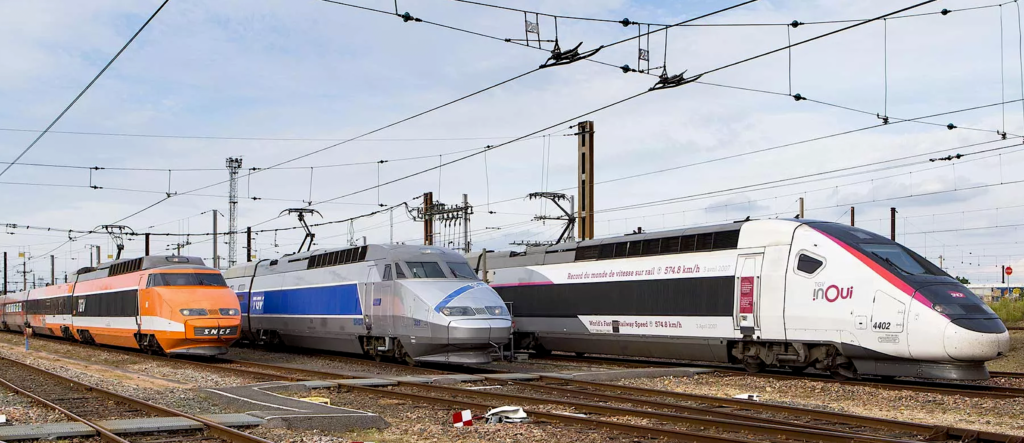

Europe must take decisive steps to simplify and modernise its rail systems to strengthen competitiveness, sustainability and sovereignty. That is the central message of the High-Level Paper on “A Future Policy-Based Public-Private Partnership for Rail”, officially adopted by the Governing Board of Europe’s Rail Joint Undertaking (EU-RAIL). The paper proposes a major co-investment strategy between the public and private sector to make rail systems more agile, resilient and competitive across the EU, calling for EUR 18 billion between 2028 and 2034 – with EUR 3 billion for research and innovation, plus EUR 15 billion for pre-deployment of harmonised technologies and system-wide implementation.
The European rail sector is a major socio-economic and sustainable asset, employing 2.3 million people and contributing EUR 143 billion to EU GDP. The European railway value chain is a global leader in design, manufacture and maintenance and it has sustained a positive trade balance over the past decade in an increasingly competitive global market. Yet, to maintain global leadership, Europe must continue to invest in rail’s competitiveness, harmonising and modernising its systems and operations.
To preserve its position, the EU must adopt a bold R&I and deployment strategy. Without a coordinated European approach towards system simplification, the EU’s industrial leadership and competitiveness will be significantly undermined, along with Europe’s ability to respond to passengers’ and businesses’ transport needs.
Developed by the members of EU-RAIL, the paper sets out ambitious targets to simplify and digitalise rail operations, harmonise standards, and accelerate the deployment of interoperable, affordable, and secure solutions. It builds on the success of Shift2Rail and the current Europe’s Rail programme, while expanding its scope to support policy-oriented research, innovation, and pre-deployment activities, capable to respond to the European Union priorities for a Prosperous and Competitive Europe.
A mission oriented approach
Rail is vital for Europe. A well-functioning rail system is strategically important for the economy and security of the EU and its Member States. Rail is also central to achieving sustainability in transport, being the greenest and most energy efficient mass transport mode, delivering the policy objectives of a Single European Rail Area (SERA) and strengthening the Single Market.
To achieve its mission of simplifying the rail system to make it more attractive, and creating the conditions for a faster and more effective and affordable deployment of innovations, the High-Level paper identifies three core objectives requiring targeted investment:
- Agility: Developing systems capable of reacting dynamically to disruptions and implementing shorter innovation cycles through enhanced modularity and simplified certification processes. This includes advancing digital systems integration and automated harmonised operations to improve responsiveness to market demands.
- Resilience: Ensuring cybersecurity, maintaining sovereignty over rail system operations, building environmental change resistance, and supporting critical infrastructure protection against current and future threats. This objective directly supports the EU’s strategic autonomy goals.
- Competitiveness: Targeting significant cost reductions in both upfront and lifecycle expenses, improved asset utilisation and system performance, and strengthened EU industrial leadership in global markets. The aim is to deliver EU reliable and competitive solutions that make rail more attractive for both passengers and freight operators.
| SATELLITE COMMUNICATIONS SERVICES DONATED TO UKRAINE

Denmark – the EU Member State currently holding the Presidency of the Council of the European Union – announced its donation of satellite communication services to Ukraine via the European Defence Agency.
The donation includes solutions that increase Ukraine’s access to secure and stable satellite-based communications, such as receiver terminals that will contribute to the country’s ability to defend itself. These terminals will ensure robust and secure connectivity, which can be crucial for the conduct of military operations. Secure and stable satellite-based communications solutions remain in high demand by Ukraine.
The framework provided by EDA can help diversify satellite communication service usage over Ukraine. Such a donation contributes to promoting both Ukraine’s and Europe’s technological strategic autonomy and freedom of action in space. Satellites play a crucial role in modern defence today. Other EU countries may be considering similar donations.
| STAR OF THE SEAS OFFICIALLY JOINS ROYAL CARIBBEAN AS THE NEXT ICONIC VACATION
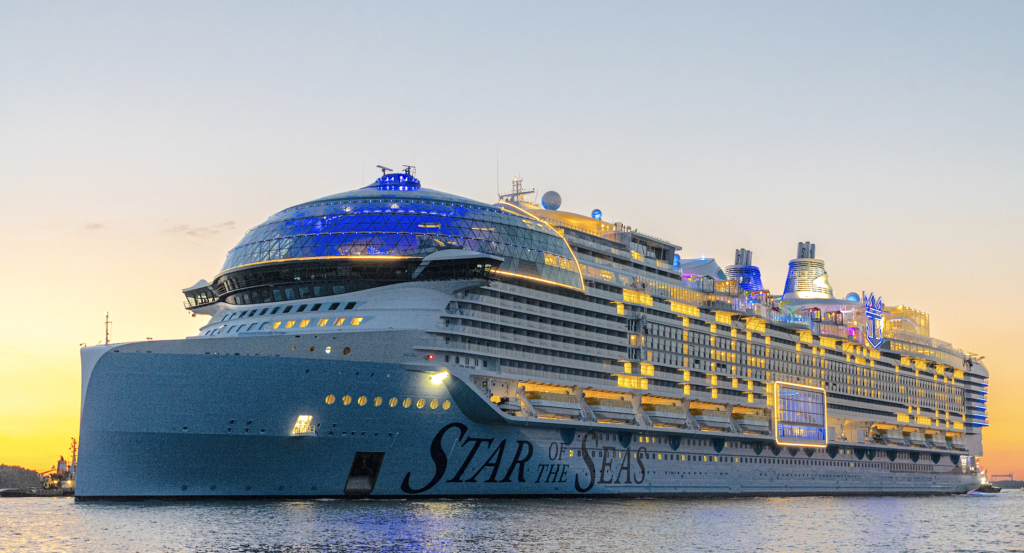
Royal Caribbean kicked off the countdown to a new era of family vacations, officially welcoming Star of the Seas* into the family.
After nearly two years of construction at the Meyer Turku shipyard in Turku, Finland, the keys to the next revolutionary Icon Class ship were officially handed over to Royal Caribbean just a few weeks ahead of its August debut in Port Canaveral (Orlando), Florida.
The delivery of the new ship marked the transfer of ownership between Royal Caribbean and Meyer Turku and celebrated the incredible feats of engineering accomplished during construction, like the installation of the glass-and-steel AquaDome, the development of six record-breaking waterslides and more. Soon, Star will make its way from Turku to Cadiz, Spain, where Royal Caribbean will put the finishing touches before Star sets sail on 7-night Eastern and Western Caribbean adventures to top-rated destinations, including the vacation brand’s fan-favorite Perfect Day at CocoCay in The Bahamas.
Star will double the world’s best vacation count with record-breaking thrills, unrivalled ways to chill, and more than 40 ways to dine, drink and be entertained across eight neighborhoods that are destinations in
themselves, including:
Thrill Island – Adrenaline lovers can find thrills of all kinds at Category 6, the largest waterpark at sea with six record-breaking waterslides including family raft slides, a drop slide and dueling mat racers; Crown’s Edge, the part skywalk, part thrill ride 154 feet above the ocean; and fan favorites, such as the FlowRider surf simulator and rock-climbing wall.
Chill Island – The three-deck slice of paradise is the ultimate spot for vacationers to kick back at four pools, including Royal Bay, the largest pool at sea. Vacationers can enjoy live bands and DJs while they party poolside and sip on tropical drinks from the Swim & Tonic swim-up bar or at The Lime & Coconut just steps away.
Surfside – Designed for young families, Surfside is the place to stay and play all day together. Kids and tots have more ways to splash at Splashaway Bay and Baby Bay, while adults relax at the nearby Water’s Edge. When it’s time for a bite, Surfside Eatery and Pier 7 have menu options for all ages.
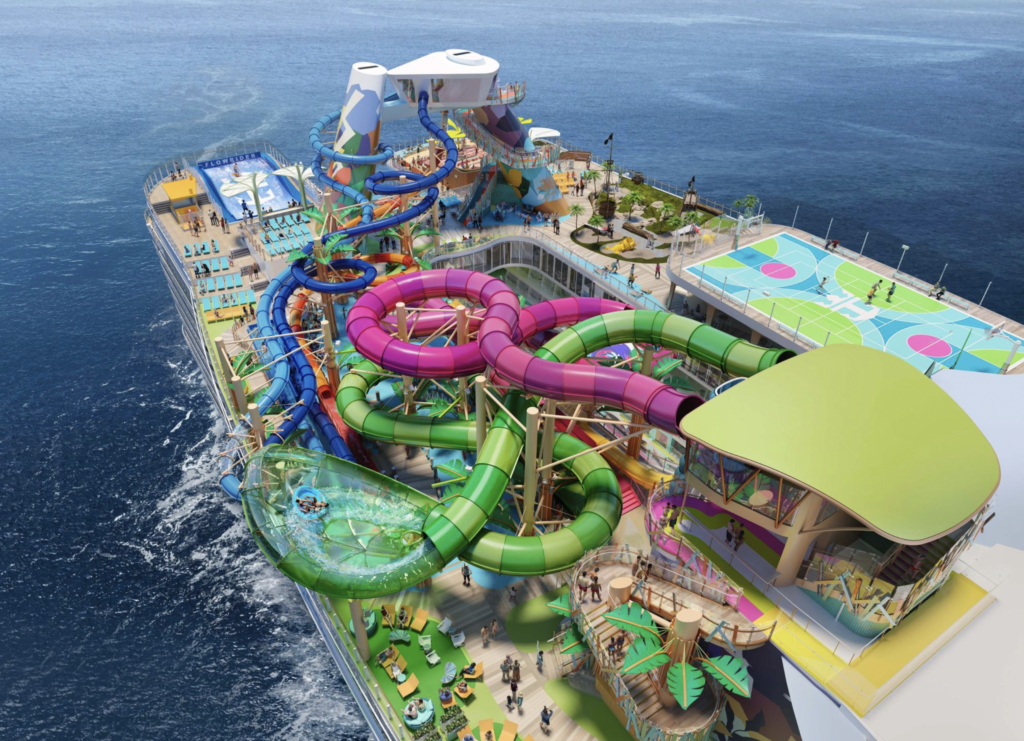
AquaDome – With wraparound ocean views, the tranquil oasis by day and vibrant hot spot at night features deck-defying shows at the marquee AquaTheater with high divers, aerialists, robots and more. AquaDome is also home to a variety of food and drink spots including the AquaDome Market food hall, the Rye & Bean bar, Hooked Seafood and The Overlook bar for unparalleled views.
The Hideaway – Tucked away at 135 feet above the ocean, the adults-only spot features a suspended infinity pool – the only other pool of its kind having been first introduced on Icon – a DJ, bar, a terrace with whirlpools and vast ocean views.
Fleet favorites reimagined for the Icon Class round out vacationers’ experience, including the Royal Promenade complete with floor-to-ceiling ocean views and the Pearl, the world’s largest kinetic art sculpture; the open-air Central Park with more than 30,500 real plants; the new 1930’s Chicago-inspired Lincoln Park Supper Club; convenient pick-up windows for sushi, champagne, sparkling wine and more.
|UBIGI PARTNERS WITH ROGERS AVIATION VIA BLUESKY TO OFFER SEAMLESS MOBILE CONNECTIVITY TO TRAVELLERS IN THE INDIAN OCEAN

Ubigi, a global eSIM services provider, has formalised a strategic partnership with BlueSky, the travel agency network of Rogers Aviation. The goal is to deliver an integrated mobile connectivity solution as part of travel services in this fast-growing tourist region.
With over 50 years of expertise in business and leisure travel, BlueSky serves travellers across the Indian Ocean, including Mauritius, Madagascar, Mozambique, and Réunion Island. The integration of Ubigi’s eSIM allows customers to enjoy immediate, cost-effective mobile connectivity upon arrival – without needing a physical SIM card.
“This partnership addresses a growing traveller expectation: staying connected simply and instantly from the moment they land. By combining our solutions with BlueSky’s on-the-ground expertise, we’re significantly easing international mobility,” emphasises Marie-Julie Le Guen, Marketing and Operations Director at Ubigi.
A Concrete response to regional growth.
This collaboration aligns with a highly favourable context. In 2024, Mauritius welcomed over 1.38 million tourists, a 6.7% increase from 2023. France remains the top source market, with nearly 340,000 visitors, followed by Réunion Island and Germany. Réunion itself surpassed 550,000 visitors – a historic record. These figures confirm the region’s renewed appeal, particularly for long-stay tourism.
Average trip durations remain high: about 11.4 nights in Mauritius and 18 days in Réunion, reflecting rising demand for reliable connectivity to support the entire travel experience, whether for tourism or business.
A digital experience Integrated into the customer journey
BlueSky’s travel advisors now offer this seamless digital experience at the booking stage for leisure getaways, short trips, and business travel. The solution’s pre-departure activation ensures smooth connectivity from the moment travellers arrive.

